We hear it all the time, “work out regularly”, “hit the gym”, or “get in shape”! In today’s culture, being involved in a regular fitness routine often means achieving weight loss, toning, or muscle building goals.
You can achieve some progress using an online personal trainer but, the results won’t be as fast or the same as when you’ll train one on one with an elite personal trainer nearby.

Fig 1. Long term proven training shortcuts help you achieve your health and fitness goals faster.
While these changes are very beneficial, and are confidence inducing feats, we ought to understand what happens to our bodies physiologically at the cellular level after following a personal training fitness plan.
In this article, we will examine why regular and structured physical activity in your life is advantageous for you, and included for you are evidenced-based lifestyle changes that can occur as a result.
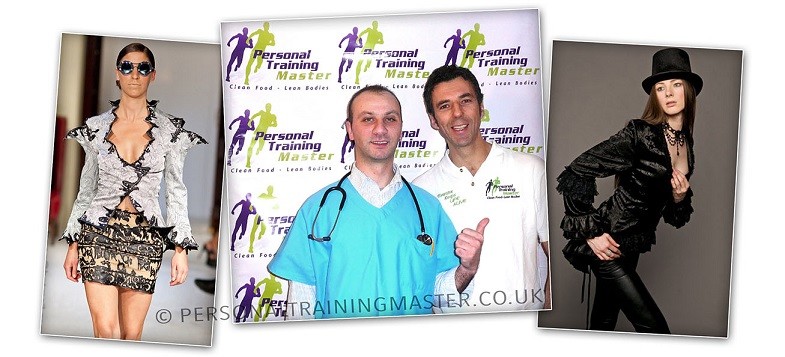
Fig 2. Jazz Alessi with three of his clients – a medical doctor and two fashion models.
On the flip side, it is also worth mentioning what happens to our bodies when we don’t participate in regular exercise.
Why strengthen your anatomy and body physiology
Living a sedentary lifestyle leads to more than just muscle inactivity and weight gain.
The latest research shows that sitting for significant periods of time without any activity is a substantial risk factor for many types of cancer, cardiopulmonary diseases, depression, decreased immune function, or even injuries to our neck, hips and back.
Professions like:
- secretaries,
- writers,
- accountant,
- IT specialists,
- video editors
- drivers
- and nearly any other office job, incorporate very limited physical activity, making it even more important to make sure our bodies are active and moving daily.

Fig 3. Office work and sitting increases health risks.
If we are in shape, how easy is it to lose our strength and exercise ability?
Another factor that will affect your fitness level is the idea that you must “use it or you’ll lose it”.
When it comes to working out, consistent exercise is a must, otherwise our bodies lose the strength, flexibility, and endurance you have worked hard to obtain.
Therefore, exercise are creating the biggest changes when they are performed consistently.
One study determined that a decrease of 14.5% was observed in strength and power in a 6-week detraining (no exercise) period [1].
In short we must stay active to stay healthy!
Continue reading to understand how a strength training program with an individualized fitness plan will dramatically improve the quality of your life.
What happens to my body as I exercise?
During a single exercise bout, your body undergoes many changes to allow for additional energy output [2].
Some of these changes you’re aware of, like an increased temperature, sweating, and increased breathing and heart rates.
However, there are copious other changes that occur that you may not even know existed.
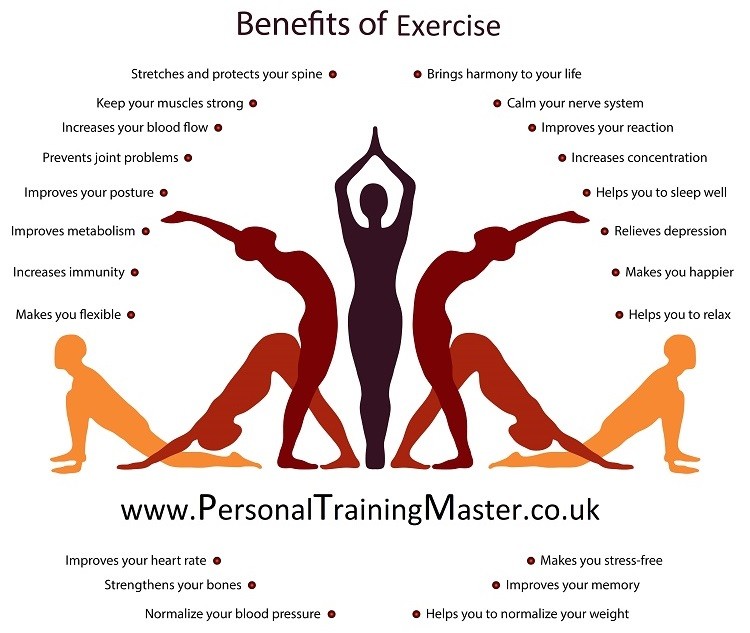
Fig 4. Few exercises benefits – less anxiety and stress, better mood, mental focus and increase in energy levels.
Other acute physiological adaptations that occur during exercise include…
- Increased cardiac output – More blood is pumped through the heart when we exercise. In untrained individuals, maximal cardiac output may be 14-20L/min compared to 25-35L/min in trained subjects [3].
- Increased breathing rate – Again, may be obvious, but your breathing rate and depth increases. This allows you to benefit from a greater oxygen intake helping your body to increase both energy and recovery during and after exercise.
- Increased metabolism – The speed of chemical reactions in the body, mostly concerning fat use and fat burn is stimulated and greatly increased [4]. The energy demands placed on our bodies increase during exercise, therefore, our bodies use either food of the energy stored in our body (by using fat cells) to supply that energy.
- Redistributed blood flow – Blood flow in the digestive organs decreases, while the blood flow in the active muscles increases. Because of the increased blood flow, capillaries and arteries in these active muscles increase in diameter to obtain more oxygen [2]. When skeletal muscle is resting, only 20% to 25% of the capillaries are open, whereas during exercise 100% of the capillaries are open [5].
- Oxygen Uptake – Oxygen uptake significantly increases during a single aerobic exercise bout, and directly relates to the mass of exercising muscle, metabolic efficiency, and exercise intensity [6]. As we warm-up to exercise, our bodies greatly increase the amount of oxygen utilization.
- Decreased Diastolic blood pressure – As we undergo physical activity, arteries in the working muscles begin to dilate. As this occurs, a slight decrease in your diastolic blood pressure is observed because there is less stress pressure on the arterial walls [7,8]. This is a benefit because your muscles can then utilize oxygen easier and more blood can flow though the widened vessel.
- Increased hormone circulation – As we exercise, the hormones in our body adapt and circulate at a faster rate than at rest. Hormone receptors may also undergo slight changes. Hormones regulate several responses in the body including energy metabolism, tissue growth, hydration levels, synthesis and degradation of muscle protein, and mood [9], and as we exercise, these become “processed” quicker within the body, generating a positive result.
These are only some of the adaptations our bodies undergo when we go from an “at rest” position into workout mode.
As we put our bodies through the movement phase more regularly, our bodies become more efficient at making these changes.
This is called “training”. Improving our bodies ability to undergo these changes builds a stronger and healthier physiological system.
Sign up and get more vital information directly to your inbox – click here now to contact Jazz Alessi.
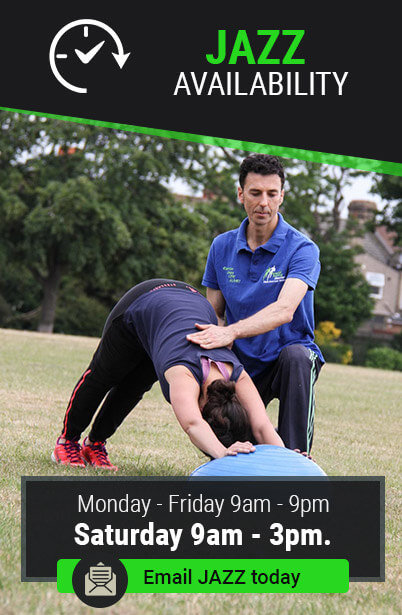
Another important physiological component in our nervous system
Varying exercise types induce different neurological responses in your body. Knowing which exercises stimulate which response can generate a variance in which of the above adaptations occur, as per workout type.
Selected exercises from Yoga, cooling down after a workout, walking, and specific Pilates exercises like the roll down induce parasympathetic manipulation, which positively stimulate your “rest and digest” mechanism [10].
Different types of exercises create different neurological responses
For example, taking a walk in the park can induce your parasympathetic nervous system, which also decreases your heart rate, enhances your mood, and reduces anxiety [11].
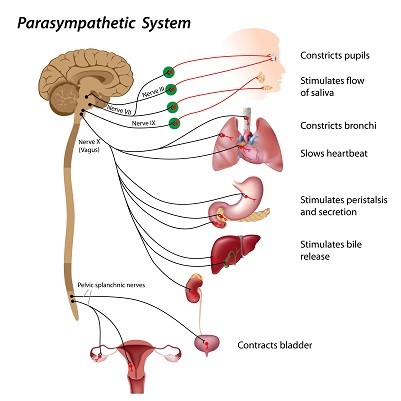
Fig 5. Parasympathetic system
Incorporating sympathetic manipulation, with exercises like sprinting, heavy lifting, or high intensity interval training increase circulation to the muscles, and increases your “fight or flight” awareness [12].
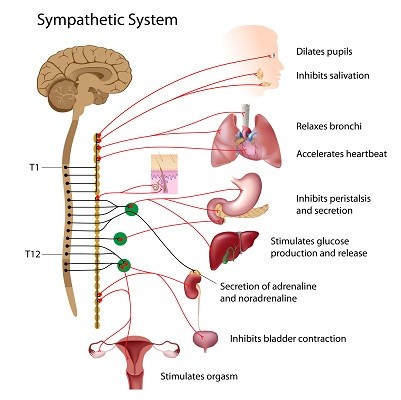
Fig 6. Sympathetic system
Each type of exercise and workouts will influence both the acute and chronic physical adaptations.
A balance of each workout type must be maintained to ensure you’re achieving the results you want.
A private personal trainer in London educated at the elite level will create a tailored workout program providing you with optimum balance in your strength training program.
Thus, this type of focused personal training fitness plan help you to progress faster to achieve maximum results.
What happens to my body as I continue to exercise and get better at making these changes?
When proper exercise is performed regularly, as stated above, you become skilled and efficient in controlling the transformations of these physiological changes.
In addition, many other physical changes occur as we continue a regimen of regular exercise.
Adaptations that occur from continued exercise significantly change your overall health, and you may begin to feel and observe these changes even at rest.
Chronic physiological responses to exercise include…
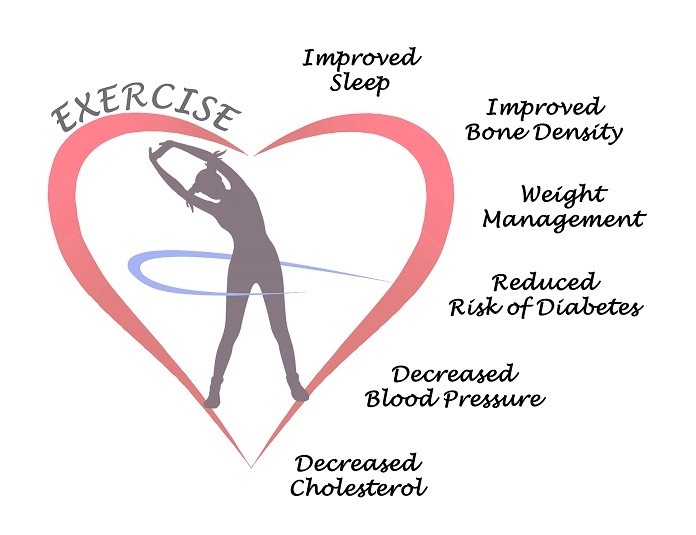
Fig 7. Multiple benefits of exercise
- Increased respiratory capacity – As you utilize your full lung capacity during exercise, slight increases (which go a long way) are observed in lung capacity.
- Improved body composition – Both fat loss and muscle definition occur when exercise is performed regularly. This comes from an overall increase in your metabolism, and your body’s ability to use the existing glucagon stored in the body.
- Decreased resting heart rate – The heart muscle strengthens because it needs to adapt to the increased amount of blood it must export to your body during physical activity [2]. Therefore, since it is stronger, less force is required when your body is at rest, lowing your resting heart rate. A well-trained athlete might have a normal resting heart rate close to 40 beats per minute, while an untrained individual might be closer to 70 bpm [13].
- Maximum oxygen uptake – This can also be called your VO2max. Your body becomes skilled at using oxygen efficiently with repeated exercise. VO2max, or aerobic power can be increased by as much as 50% but this is usually in untrained, sedentary individuals [14].
- Increased muscle fiber size – When you work out, your muscles become larger. That is not caused by an increased number of muscle fibers, but rather an increase in muscle fiber size [15].
- Increased stroke volume – Stroke volume is defined as the volume of blood pumped through the left ventricle per heartbeat. Again, as the heart strengthens, it pushes more blood through in a single beat. Positive adaptations occur in as little as three months of aerobic training [16,17].
- Lower prevalence for chronic disease – Several studies indicate that regular physical activity significantly reduces your chances of suffering from chronic diseases. This can include cardiovascular diseases, osteoporosis, arthritis, and several others [18].
These changes on the physiological level enable our bodies to become a well-functioning machine.
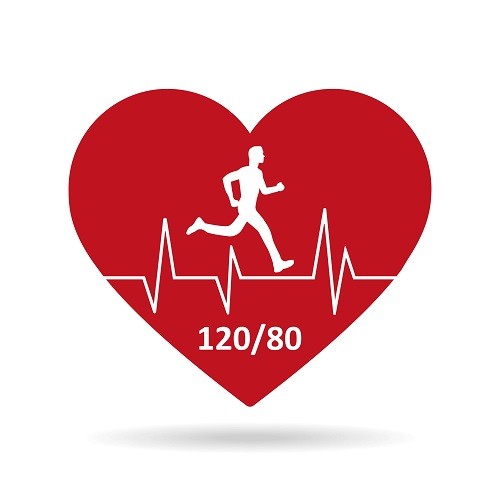
Fig 8. Exercise supervision and customised exercise helps you strengthen heart health.
Additionally, as these changes begin to take place in our body, we will also notice positive adaptations to our daily schedule.
In today’s fast-paced society, we must prioritize our health and let our bodies operate with their full potential.
Sign up and get more information directly to your inbox or click here to contact elite personal trainer in London.
What kind of changes will regular training produce for me day-to-day?
Looking at the physiological standpoint of exercise and physical activity can sometimes be overwhelming.
Thus, it is also vital to know what changes can happen in our everyday lives.
These anatomical and physiological alterations produce some powerful and positive noticeable changes to our routine such as…
- Better Sleep [19]
- Improved self-esteem and confidence
- Increased energy, less likely to become tired
- Better job productivity and brain function
- Improved sex life
- Better mood and less likely to become depressed [19]
- Increased stamina
- Less stress [20]
- Better endurance and stamina
- Improved relationships among family, friends, and co-workers
When you begin to improve in these facets of our life, you become a more superior being to the person you were before undergoing regular exercise.
A higher quality of life also means you’re happier, less anxious and even depressed and those around you will soon take notice.
If you’re looking for some of these changes in your own life, consider working with personal trainer Jazz Alessi, a personal trainer and nutritionist, who can develop an individualized workout plan with a sport nutrition or a weight loss dietary plan for you.
Thus, you’ll notice these changes you want to see faster as Jazz customises absolutely everything to your challenges and goals.
What happens if you continue the path of sedentary lifestyle?
When you get stuck in the mundane routine of job, family, or social stresses, it’s difficult to see the light at the end of the tunnel.
You may have even asked yourself, “How could I possibly have time to work out?”.
However, prioritizing time at the gym allows you to increase your productivity levels [21], increases mood, and can lead to several other beneficial lifestyle changes (as listed above).
Budgeting time to work out actually gives you more time to then do the tasks you’ve been struggling with day-to-day.
When we don’t exercise the daily pressure and tensions that act on your body begin to accumulate.
This can lead to poor posture, less body oxygenation, less energy, back and shoulder pain, and even increases your risk of injury.
In addition, poor posture significantly decreases the functionality of your lungs, digestive system, and metabolism.
One study indicated that 92% of people stated it was easiest to generate positive thoughts in the upright position, meaning less stress, less tension, and less negative thinking in your overall day [22].
Sitting and Inactivity effects
Sitting for long periods of time has some serious health consequences.
In a research design that analysed the results of 31 studies, the following outcomes were determined: most active women had a 12% lower risk of developing breast cancer that the least active women (23); Concerning colon cancer, data suggest a 25% lower risk for the most active groups (24,25); Active women have apparently a 30% decreased risk to suffer from endometrial cancer (26).
There are several other studies that show similar results.
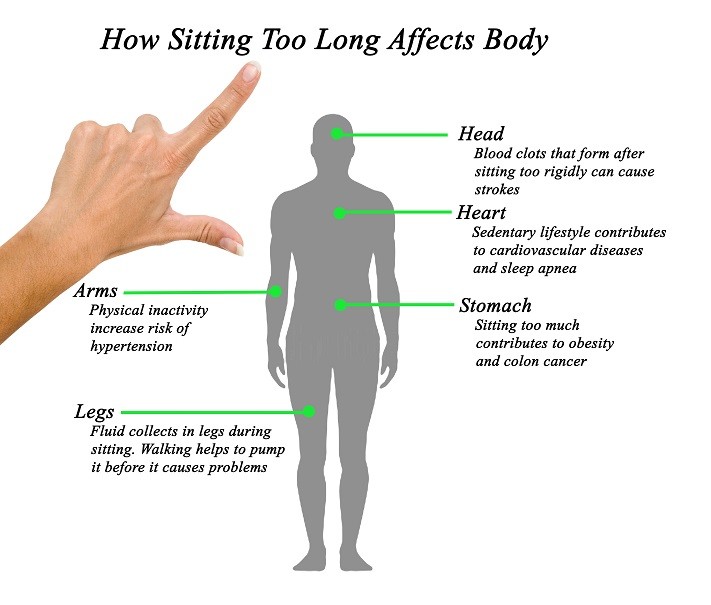
Fig 8. How sitting affect our health.
Failing to initiate a regular workout routine and avoiding the “get off your butt” slogan only increases each of these risk factors.
So…I need to work out, how do I start?
There are many options if you want to begin a serious, structured workout routine.
Using a personal trainer is the most safe, effective, and productive method to begin your journey.
An experienced injury rehabilitation educated personal trainer near me have the right tools to develop a unique plan to provide you with the most benefit.
This will be all based on your fitness goals, body type, gender, age, metabolism, lifestyle, challenges and exercise preferences – to name just a few things which matter.
Each of these are crucial aspects of working out, so you’ll adhere to your newly designed workout plan.
The age-old excuse of “I just don’t have time to work out” may seem insurmountable.
If this is the case in your life, explore options of personal trainers at home who come to your place at home, work or in town helping you benefit from one to one personal training.
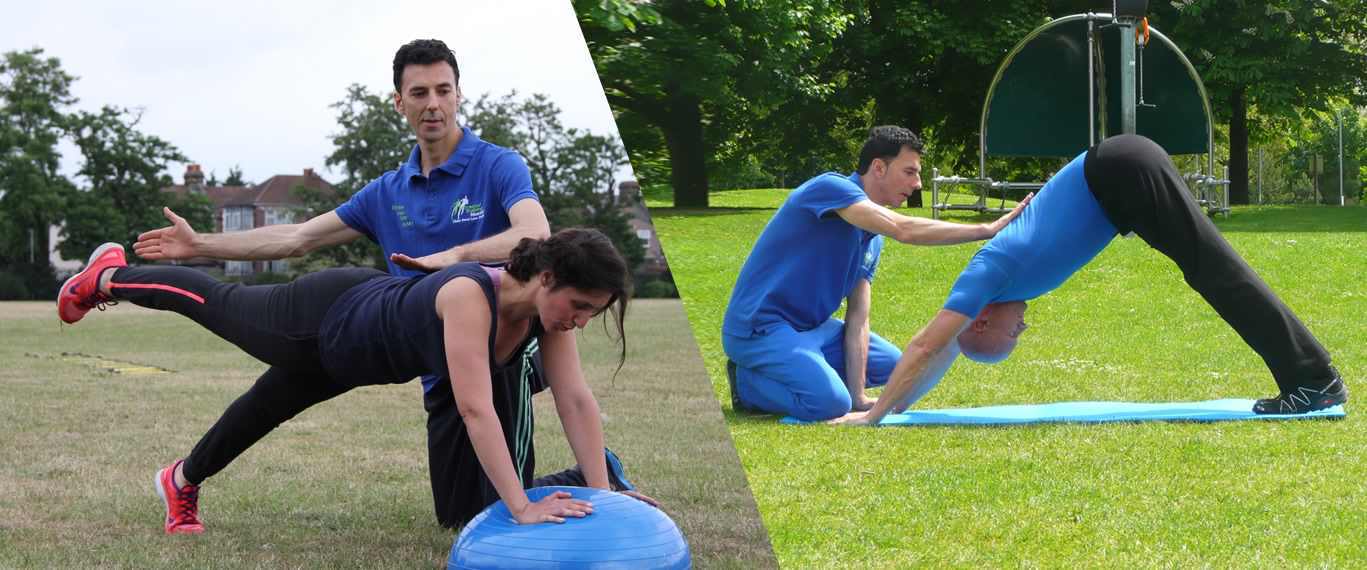
Fig 9. Jazz Alessi trains outdoor two clients.
This eliminates all your travel time, which can be a significant hurdle in the London area, and saves you the hassle of transportation.
It is also easier to stick with a routine if it nicely provided at your location and fits to your schedule.
It is proven that personal training fitness is one of the best ways to guarantee exercise adherence [27] providing you with the best shortcut for your health and fitness goals.
Contact Jazz Alessi now for a Free Consultation at your place.
Get ready to change your life, for the best reasons possible by using a certified personal fitness trainer
There are no two bodies that are exactly the same, therefore, it is impossible for one workout plan to work the same for everybody.
A tailored, unique exercise program must be created so you can safely reach your fitness goals.
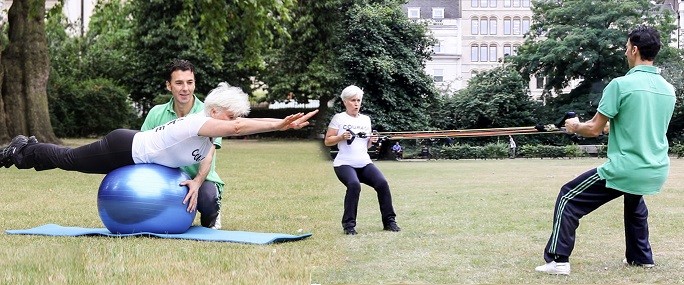
Fig 10. Jazz Alessi train outdoor a client in Holborn – central London.
It should now be apparent that working out provides numerous benefits physiologically, structurally, and mentally.
If you’re wanting to improve your quality of life with a customised-to-your-goals fitness plan, contact “a personal trainer near me”, Jazz Alessi. His proven success through the many stories of his clients’ testimonials displays his natural talent for making personalised fitness plans that route you to fitness, success, or health recovery.
Keen to get started?
Click here now for a free consultation.
References
- McMaster DT, Gill N, Cronin J, et al. The development, retention and decay rates of strength and power in elite rugby union, rugby league and American football: a systematic review. Sports Med. 2013 May;43(5):367-84.
- Saltin B, Rowell LB. Functional adaptations to physical activity and inactivity. Federation Proceeding. 1980 Apr;39(5):1506-13. 8
- Wilmore JH, Costill DL. (2005) Physiology of Sport and Exercise: 3rd Edition. Champaign, IL: Human Kinetics. 4
- Green HJ, Jones S, Ball-Burnett M, Farrance B, Ranney D. Adaptations in muscle metabolism to prolonged voluntary exercise and training. J Appl Physiol. 1995 Jan;78(1):138-45.
- Vander A, Sherman J, Luciano D. Exercise Physiology: The mechanisms of body function. William Brown Publishing. 2002
- Vianna JM, Werneck FZ, Coelho EF, et al. Oxygen uptake and heart rate kinetics after different types of resistance exercise. J Hum Kinet. 2014 Oct 10;42:235-44.
- MacDougall JD, Tuxen D, Sale DG, Moroz JR, Sutton JR. Arterial blood pressure response to heavy resistance exercise. J Appl Physiol. 1985 Mar;58(3):785-90
- Hagberg JM, Ehsani AA, Goldring D, Hernandez A, Sinacore DR, Holloszy JO. Effect of weight training on blood pressure and hemodynamics in hypertensive adolescents. J Pediatr. 1984 Jan;104(1):147-51.
- McCall, P. The 8 hormones involved in exercise. American Council of Exercise. April 2015.
- Guilkey JP, Overstreet M, Fernhall B, et al. Heart rate response and parasympathetic modulation during recovery from exercise in boys and men. Appl Physiol Nutr Metab. 2014 Aug;39(8):969-75.
- Chorong S, Harumi I, Miho I, et al. Physiological and Psychological Effects of a Walk in Urban Parks in Fall. Int J Environ Res Public Health. 2015 Nov; 12(11): 14216–14228.
- Carter JR, Ray CA. Sympathetic neural adaptations to exercise training in humans. Auton Neurosci. 2015 Mar;188:36-43.
- Valentini M, et al. Variables influencing heart rate. Progress in Cardiovascular Disease. 2009;52:11.
- Stager JM, Tanner DA. (2005) Swimming: 2nd Edition; An International Olympic Committee Publication. Oxford UK: Blackwell Science Ltd.
- Antonio J, Gonyea WJ. Skeletal muscle fiber hyperplasia. Med Sci Sports Exerc. 1993 Dec;25(12):1333-45.
- Knobloch K. Non-invasive determination of stroke volume and cardiac output after high intensity playing exercise in elite female soccer players. Int J Cardiol. 2009 Feb 20;132(2):267-9.
- Ross, M. Changes in Cardiac Output During Exercise. June 2015.
- Suzuki T. Exercise for prevention of osteoporosis and other lifestyle-related diseases. Clin Calcium. 2011 May;21(5):722-9.
- Passos GS, Poyares D, Santana MG, et al. Exercise improves immune function, antidepressive response, and sleep quality in patients with chronic primary insomnia. Biomed Res Int. 2014;2014:498961.
- Hamer M1, Endrighi R, Poole L. Physical activity, stress reduction, and mood: insight into immunological mechanisms. Methods Mol Biol. 2012;934:89-102.
- Pereira MJ, Coombes BK, Comans TA, et al. The impact of onsite workplace health-enhancing physical activity interventions on worker productivity: a systematic review. Occup Environ Med. 2015 Jun;72(6):401-12.
- Wilson VE, et al. The effects of upright and slumped postures on the recall of positive and negative thoughts. Applied Psychophysiology and Biofeedback. 2004;29:189.
- Wu, Y., et al. Physical activity and risk of breast cancer: a meta-analysis of prospective studies. Breast Cancer Res, 2013. 137(3): p. 869-82.
- Wolin, K., et al. Physical activity and colon cancer prevention: a meta-analysis. Br J Cancer, 2009. 100(4): p. 611-6.
- Robsahm, T.E., et al. Body mass index, physical activity, and colorectal cancer by anatomical subsites: a systematic review and meta-analysis of cohort studies. Eur J Cancer Prev, 2013.
- Moore, S.C, et al. Physical activity, sedentary behaviours, and the prevention of endometrial cancer. Br J Cancer 2010. 103 (7): 933-8
- Wing RR, Jeffery RW, Pronk N, et al. Effects of a personal trainer and financial incentives on exercise adherence in overweight women in a behavioral weight loss program. Obes Res. 1996 Sep;4(5):457-62.
Disclaimer: This website and all its content is to be used for information purposes only. This website or any of its content or links to third parties does not diagnose, advise, treat or cure any ailments, illness or disease.
You agree to hold harmless the owner of this site for any action taken on your own without consulting your medical doctor first by using the information on the website for diagnostic, treatment, or any other related purposes. This is not medical advice. If you are suffering from any illness, disease or ailments please contact your doctor first and immediately.



